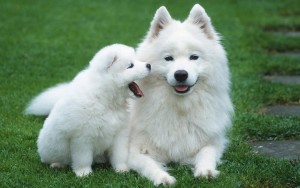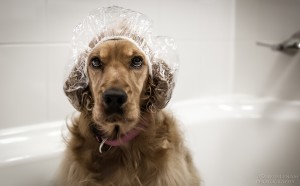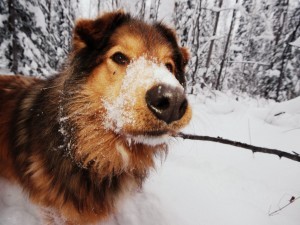There’s one nuisance that all dog owners face – shedding! All dogs, short or long-haired, big or small, will lose old or damaged hair on a regular basis. This occurs naturally and the frequency of shedding can depend on the dog breed and health, as well as time of year. You may notice an increase in hair loss particularly in spring and fall, as many dogs lose their thick winter coats in time for summer.
Dog shedding is something that you can’t avoid, however, there are many ways you can prevent your pet hair from taking over your home. Here are PPC Cleaning’s top 5 tips to reduce dog shedding to keep your home clean and hair free!
1. Brush your dog
It sounds obvious, but regular brushing is the simplest way to reduce dog shedding. It’s worth investing in proper grooming techniques so you can minimize your cleaning load and prevent those unwanted fur balls from floating around your home.
Daily brushing will keep your dog’s hair smooth and shiny, remove dirt and tangles and also prevent the rooting of fleas and parasites, which can cause irritation and further shedding.
It’s important that you use the right type of brush too. Generally, there are 3 kinds: bristle, wire-pin and slicker.
- Bristle brush: generally used on all coat-types and can vary in size and bristle spacing. The longer the coat, the wider the bristle spaces should be.
- Wire-pin brush: recommended for pets with medium to long hair, as well as those with curly or wooly coats. These can come with or without rubber tips.
- Slicker brush: good for removing tangles and matted fur and have thin, wire bristles.
If in doubt, your veterinarian or dog groomer should be able to recommend a type of brush that is best for your dog’s coat type.
2. Buy quality dog food
 Nutritious dog food is another great tip to reduce dog shedding.
Nutritious dog food is another great tip to reduce dog shedding.
The condition of a dog’s skin and fur is a reflection of what they eat, so opt for foods that are rich in vitamins, whole grains, omega-3 and omega-6 fatty acids, as this will help promote a healthy coat and prevent shedding.
Allergies or sensitivities can also cause excess shedding, so you may need to experiment with different brands to find the perfect match for your pooch.
3. Add oil to your dog’s food
Olive oil, coconut oil or flaxseed oil are great additions to your dog’s food. These oils contain omega-3 acids and can improve your dog’s overall fur texture as well as reduce dandruff, prevent skin inflammation and reduce shedding. Adding 1 tsp daily to your dog’s food can help maintain his well being as well as a shiny, healthy coat.
4. Bathe your dog regularly
The ASPCA recommends dog bathing every 3 months, but this can vary with breed as some dogs need bathing more than others. Bathing can help to reduce excess fur and keep your dog’s fur nice and clean. Always use a mild dog shampoo (never use human shampoo as this can dry your dog’s skin) and ask your vet for guidance on how regularly your dog should be bathed.
than others. Bathing can help to reduce excess fur and keep your dog’s fur nice and clean. Always use a mild dog shampoo (never use human shampoo as this can dry your dog’s skin) and ask your vet for guidance on how regularly your dog should be bathed.
PCC Cleaning also recommends washing and cleaning your dog’s toys and leaving an old towel by the door to wipe their muddy or wet paws. It’s also a good idea to shake your dog’s bedding at least once a week, to prevent a build up of fur.
5. Check your dog’s health
 While excess shedding is normal in dogs, it can also be an indicator of stress, poor health or malnutrition. Excessive hair loss or bald patches in your dog’s fur may be caused by parasites, infection, allergies, pregnancy, medication or illness.
While excess shedding is normal in dogs, it can also be an indicator of stress, poor health or malnutrition. Excessive hair loss or bald patches in your dog’s fur may be caused by parasites, infection, allergies, pregnancy, medication or illness.
If you’re worried about your dog’s health, your veterinarian will be to advise you if the level of shedding is normal for your breed or if there may be an underlying health issue.
* PCC Cleaning’s best tip for removing pet hair from your couch *
Using rubber gloves, wet your couch slightly and use a lint brush to pick up any leftover hairs. Try rubbing a damp cloth on the problem areas to collect and remove the hair.
Do you have any great tips to add to reduce dog shedding? If so, we’d love to hear them!








